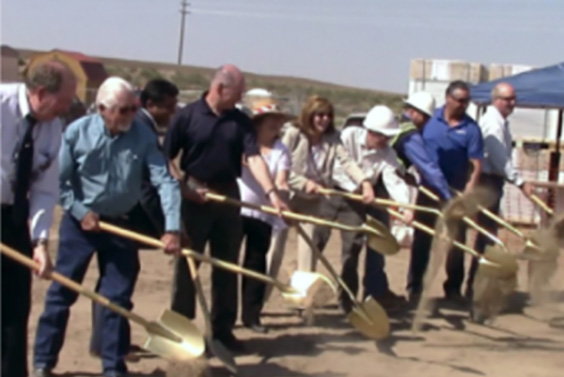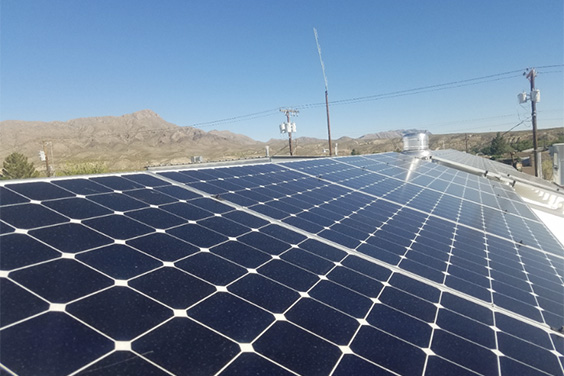RIO RANCHO PUBLIC SCHOOLS
Rio Rancho Public Schools on executing a Power Purchase Agreement for solar.
In 2012-13, Rio Rancho Public Schools (RRPS) was presented the opportunity to partner with Washington Gas Energy Systems, AMSOLAR (now acquired by Washington Gas), and Conergy to install solar systems at its two large comprehensive high school’s Rio Rancho High (current enrollment 2,570) and V. Sue Cleveland High (current enrollment 2,490). The school board approved the project in November 2012, with construction beginning the following summer. The project was dedicated in October 2013.
What tools, resources or financing did you use to establish your project?
The Rio Rancho Public Schools Board of Education executed a Power Purchase Agreement (PPA) with Washington Gas and PNM (formerly the Public Service Company of New Mexico). RRPS owns the land on which the array is built, and Washington Gas owns the arrays. AMSOLAR designed the arrays and contracted with Conergy to install them. AMSOLAR then sold the completed arrays back to Washington Gas. While the PPA is complicated, RRPS’s utility bills with this system include payment to Washington Gas at a lower flat rate for approximately 80 percent of the power generated through the array, and to PNM at prevailing rates for the remaining 20 power. Power generated by the arrays in excess of the needs of the schools is returned to the grid and RRPS receives a credit applied against PNM’s bill for the excess power generation.
What benefits have you realized?
RRPS estimates the solar arrays at Rio Rancho and Cleveland High save the district approximately $700,000 per year in utility costs. At the time it was installed, it was estimated that the smaller solar array now located at Rio Rancho Middle School could save the district up to $20,000 annually in utility costs, though that number may have changed since the array was originally installed at a different location. In addition, the presence of the solar arrays provides the schools with an educational resource that can be leveraged by classroom teachers in STEM instruction.
What challenges did you overcome to implement your project?
This was one of the first projects of its kind in New Mexico and even in the nation. As a result, there were numerous legal and practical issues to be worked out. Since this project fell outside the normal utility regulatory process in New Mexico, the execution of the PPA broke some new ground in this area.
What advice would you give neighboring communities who are trying to implement a similar project?
Customarily, as an end-user your community would be approached by a vendor who wants to partner in the project. Be patient and do your due diligence on cost-benefit analyses, permitting, legal groundwork, etc. Gather appropriate public input, especially from neighbors who might object. You do not want to get the system built and find unanticipated community or legal roadblocks, or that the project is not cost-effective for your situation. One variable that might affect the feasibility of the project is availability of land for construction of the arrays. If land has to be acquired, or if the arrays need to be built on top of a building or a structure built for the purpose (such as the canopies over parking lots seen in some areas), this could add considerable cost to the project. But if the indicators are positive, a solar system can be a great addition to your facility and community!


